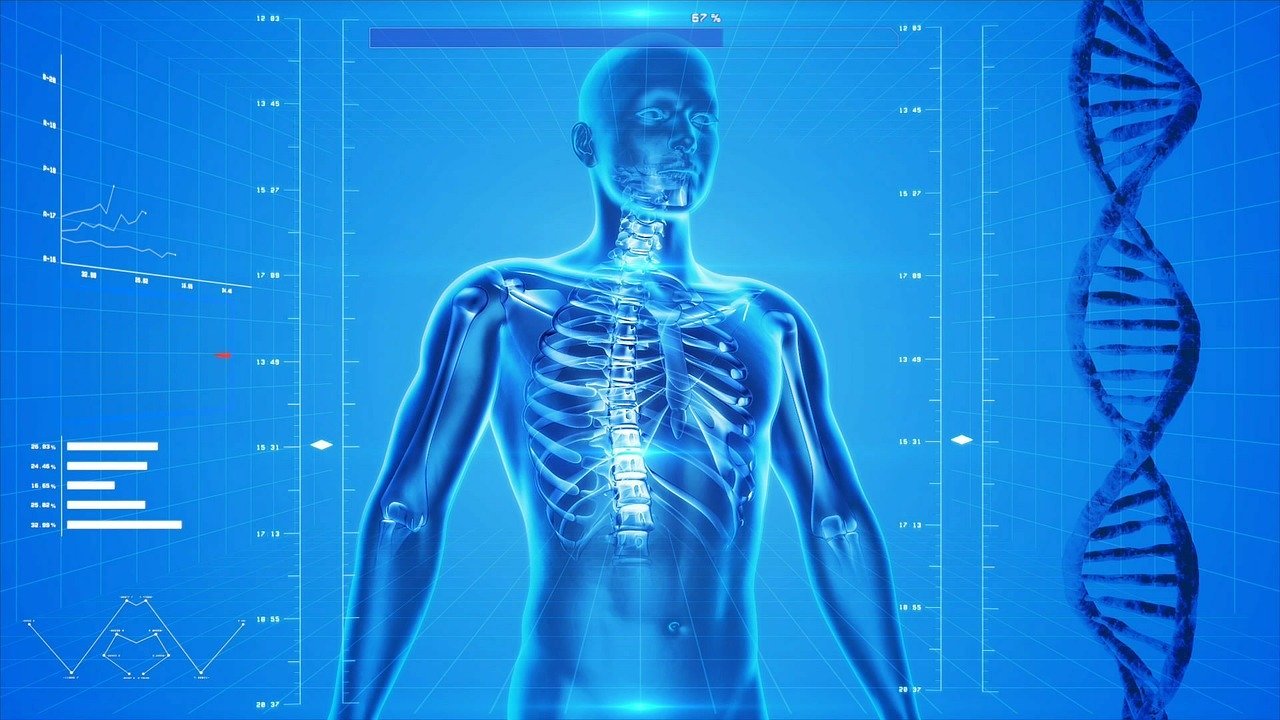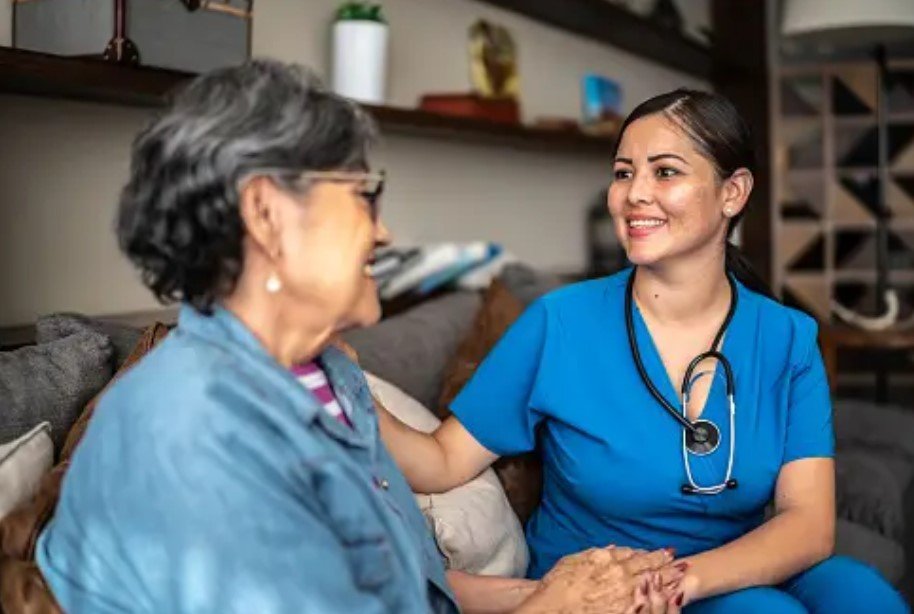From genomics to telemedicine to 3D bioprinting, technologies could revolutionize the healthcare industry and help everyone access better care.
Today, the digital change is also influencing our health and fitness more than ever. These advances will not only improve the quality of life for millions of people, but could also have far-reaching consequences for the healthcare industry and for employers in general.
Thanks to advances in medicine and nutrition, life expectancy has increased significantly in the past century. However, degenerative and lifestyle-related health problems are becoming more common in older populations. According to the World Health Organization, these non-communicable diseases are already responsible for 75 percent of the world’s deaths. Tens of millions of people worldwide suffer from these diseases and the consequent quality of life restrictions. The economic consequences are similar: According to the World Economic Forum, five of these noncommunicable diseases alone could cost the global economy up to $47 trillion by 2030.
So how can digital change help us become healthier and the healthcare industry fitter? Here are a few of the ways digital technologies could help us not only live longer, but also healthier and more productive lives:
Genomics
With computers becoming increasingly powerful, we are beginning to exploit the full potential of human DNA analysis – individual tests and personalized medical care are possible, which could enormously improve the treatment results of patients with numerous diseases. Illumina is a company involved in Genetic Sequencing and developed a portfolio of several products that can be used in functional and complexity analysis. They have contributed in early detection of cancer patients, selective breeding, and analysis of clustered DNA.
Wearables
Wearables are portable, intelligent health monitors that collect personalized data in real time and encourage a healthier lifestyle. They can also collect huge amounts of data for medical research. Some companies are already using wearables to improve performance in the workplace. By monitoring employee health and stress levels, companies can provide health tips, often leading to increased productivity. Apple Inc. Samsung and FitBit have been offering the most popular wearables that combines technology and health in the most harmonizing way.
Big data in medicine
Thanks to increasing DNA analysis, collection of lifestyle data about wearables and the digitization of medical records, a more detailed comparative patient analysis is possible. If you compare the data of patients who have a comparable DNA, a corresponding medical history and similar lifestyles, health risks and the effects of different treatments can be better understood.
Organ-on-chips (OOC)
A combination of advanced DNA sequencing and stem cell research enabled researchers to build miniature organs based on patient DNA. Equipped with electronic sensors, they can measure how a treatment works at cell level. This allows you to find out in advance which treatment will be the most successful for the patient. Hepregen started in 2008 with a funding of $4.5 million. They successfully started selling “liver on a chip” under HepatoPac brand name. Similarly, Hurel Corporation started off in 2005 and offers the same product that supports four species.
Social media as a feedback mechanism could lead to the continuous optimization of health services.
Hospital Reviews
Healthcare providers and authorities are increasingly using patient reviews published on social media or digital surveys to identify potential problems and improve quality of care. News – positive and negative – can be disseminated directly and extensively via social media and dedicated healthcare platforms, which could result in health care facilities responding to customer feedback more and more quickly. These platforms could become a feedback mechanism that leads to the continuous optimization of health services.
Digital Trend Monitoring
By monitoring social media channels and search engines for specific keywords, search trends for certain medical symptoms can be discovered. The results are used more and more to identify the outbreak of diseases and to react quickly to them. The findings are of course helpful for every company in the healthcare industry. They can also be useful for employers who want a healthy and well-positioned team in the future. Large employers could use accurate interpretation of the data to recognize when certain preparations have to be made – whether it is about ordering an extra handkerchief in time for the cold wave or hiring additional temporary workers who can represent sick staff.
PatientPoint Incorporation develops MIS (medical information systems). The company provides solutions to improve patient engagement, end-to-end billing service, and care coordination. The target market of PatientPoint Incorporation is pharmaceutical manufacturers, benefits managers, physician offices, hospitals and retail clinics.
Genetic engineering
While manipulating human DNA to fight disease remains controversial, gene therapy and the use of genetically modified viruses to fight disease are becoming more common. For example, genetically modified mosquitoes are used in the fight against malaria and the Zika virus.
Healthcare has long since reached the digital age. Service providers and customers have to face this change. In order to remain successful in an increasingly digital environment, healthcare providers should not only change their internal processes, but also their view of the world.
Telemedicine
Mobile technologies are increasingly used to relieve the burden on health systems. With their help, patients can consult a doctor without having to leave home. Less travel time can lead to increased productivity in any environment. However, the biggest changes are likely to mean telemedicine for more remote locations: Talking to patients on their cell phones is slowly giving some of the poorest people in the world access to medicine for a fraction of the amount that a traveling doctor would cost.
According to the UN’s International Telecommunication Union, there are more than 7 billion mobile phones worldwide; in 2000 there were still 738 million. 3.2 billion people use the Internet worldwide. Two billion of them live in developing countries.
This trend has led to the development of creative solutions that use linked technologies to reach people who would otherwise have little access to health information. Adviise platform – that was founded by Alexandra Batool Alizadeh in 2019 – offers telemedicine as the first HIPAA compliant and fully integrated medical services platform. The portal offers several features, such as booking of appointments, reviewing providers, encrypted messaging, pre-pay services and security of medical records. Like all platforms, the CEO Alexandra Alizadeh had to reassess the booming demand for telemedicine in 2020 amid COVID-19. Adviise Inc. successfully launched a telemedicine portal in May 2020.
Platforms like Adviise lower the increasing medical costs that continue to soar during the pandemic. Telemedicine will also help the hospitals to control the unmanageable arrival of patients. The technology will streamline treatment and diagnostic processes, making them more accessible and efficient.
Surgical Robots
Robot-assisted surgery not only enables more precise operations, which in turn accelerates healing. With their help, specialized surgeons can also treat patients thousands of kilometers away, so that they do not have to travel there. With increasing technical progress, it is also conceivable that surgical robots will operate independently in the future.
3D bioprinting
The ultimate medical dream doesn’t seem far off – in February 2016, researchers at the Wake Forest Institute for Regenerative Medicine announced that they could successfully implant bones and muscles made in the bioprinter into animals. With the help of DNA analysis, we are getting closer to the age of customized, interchangeable body parts. It may not just be a replacement. In the future, there could be tailor-made body parts with improved properties.
What does that mean for entrepreneurs?
In order to meet the health needs of an older workforce, we must create solutions that keep the costs of access to healthcare low and limit the loss of productivity caused by health reasons. The latest research published by the Journal of Occupational and Environmental Medicine even suggests that companies with good health and wellness programs perform better than those without.
Conclusion
Companies that are positive about health technologies could contribute to an overall healthier population and do something good for their own balance sheet.





